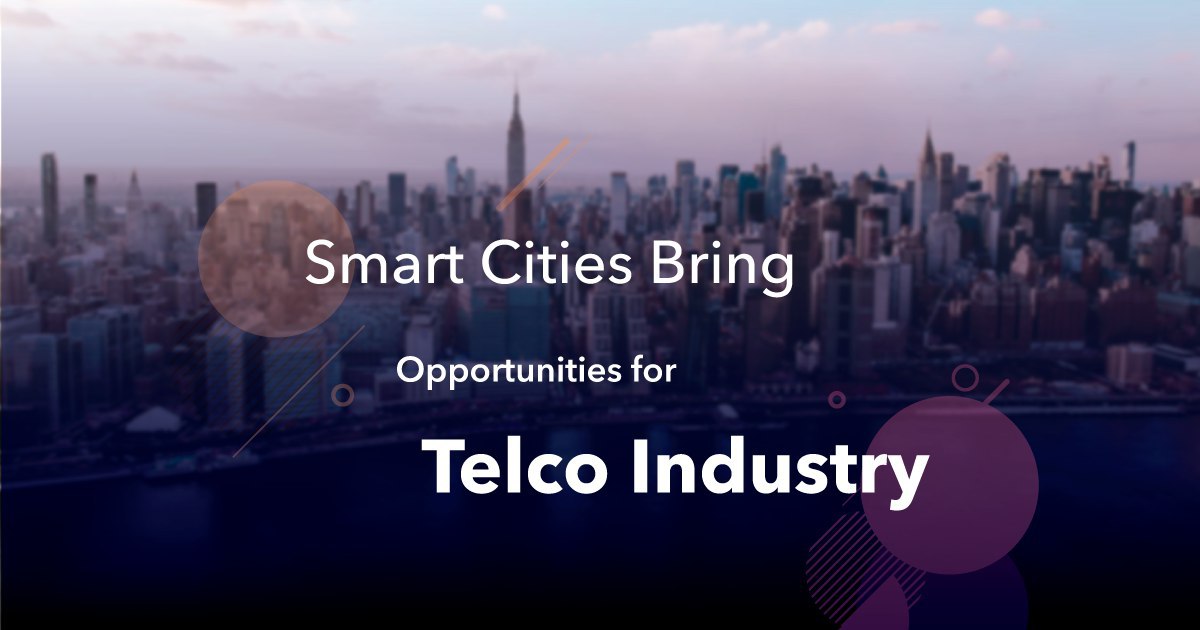
Urban areas transform from static to dynamic spaces. They become smart and can constantly monitor the process and update themselves. A number of countries are beginning to work on the creation of “smart cities”, where state and non-governmental organization structures collaborate for developing these technologies. For example, in the United Arab Emirates (UAE) and Saudi Arabia IoT’s investments are expected to increase by 19.3% in 2019.
IoT is the foundation on which smart cities are built. The development of connection is a strong argument for the introduction and widespread adoption of the new type of cities. By 2020 there will be near 500 billion devices connected in the whole world. The task of the telco operators is to provide connections and the opportunity to manage data from them.
Why is it important to develop exactly smart cities? The 54% of the population in the world live in cities now. Over the next 25 to 35 years, 80% of the population is expected to live in just 600 megacities. It also stimulates digital transformation.
Challenges of smart cities
Despite effective communication networks existing in the city with its own fiber networks or dense sensor networks, communication still poses a problem for the city’s intelligent innovative development. The year 2018 was held under the auspices of talking about 5g and in China, 6g is already predicted, but this speed is not enough yet.
Furthermore, the connection between the sensors and the core infrastructure should be based on support for several applications. The data from different devices must be transferred to the cloud storage, as well as ensure their data acquisition. All information must be analyzed and moved to special applications, and after that, it could be used by residents of smart cities.
The benefits of living in a smart city
Urban operation systems are applied in the scale of a smart city and identify patterns of life in the city. Authorities can view the real-time data from vertical IoT applications to optimize and improve city life. Computer vision will lead to better services, better public safety, less congestion and new levels of efficiency in such cities. A great example of computer vision in action is smart street lights. Equipped with this technology, they can dim the brightness when they don’t detect people or vehicles (energy saving) to tick off parking places nearby. So, drivers can quickly find the nearest free space. Smart traffic lights can monitor and optimize traffic signals and cross-route.
The new generation of measuring systems for water, gas, and electricity is quite common. The recent program in Amsterdam allowed to effectively manage solar energy and promoted the sale of surplus electricity to the central network. From a public safety point of view, lights with computer vision turned on can send alerts about dangerous potholes or pollute sewage. The most important advantage of life in the new generation cities is the high level of security. After widespread usage of the IoT, the police will be able to channel the entire city based on IP systems to detect crimes or traffic jams.
An implementation case
Condo in South Korea was originally built as a smart city. Every inch of the city is lying in a fiber-optic cable; climate, energy consumption, leisure, and water consumption are monitored. Even small children are generating big data. They wear bracelets with sensors that make it easy to find them if they are lost. The advantages of this whole dimension are clear. The transportation system and energy consumption are better in Condo comparing with non-smart cities, the government can track a state of health of adult citizens etc.
Changes in urban life are not only in progressive South Korea. An American multinational conglomerate holding company AT&T and the city San José announced in April strategic cooperation. They are developing a broad network to improve the existing capacity of voice information and data. All this while laying the foundation for mobile 5G standards that AT&T expects to begin entering in the city in the first half of 2019.
Many telecommunications solution providers, such as Cisco and IBM, also demonstrate how education, healthcare, smart buildings, traffic infrastructure, and intelligent parking can be connected in the system and how those systems had an influence on the community.
Get Professional Advice
For general and sales inquiries regarding JeraSoft billing solutions, please contact the Sales Team at [email protected] or use the form and a team member will get back to you as soon as possible.
Please contact JeraSoft Support for any product or support related questions at [email protected] or visit JeraSoft Documentation.